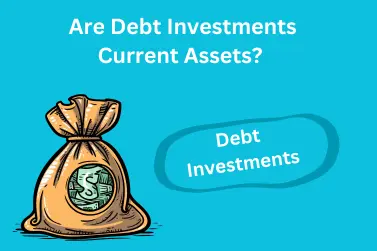Are Debt Investments Current Assets Or Non-Current Assets?

Debt investment is the financing that investors give to a business and a business owner has to pay it with interest within a specific timeline as per the contract term.
Are Debt Investments Current Assets?
Debt investments can be current or non-current assets according to the company’s intent for investment holding period and accounting treatment.
Debt investments are classified as current assets when a company plan to hold them for a short period such as one year or a business cycle while debt investments are classified as non-current assets when a company plan to hold an investment for a longer period.
In short, the classification of debt investment depends on the company’s investment strategies and intent. If the company holds debt investment for a shorter period or intended to sell debt investment within a year is classified as a current asset and If the company holds debt investment for a longer period or is not intended to sell debt investment within a year is classified as a non-current asset.
What is debt investment?
Debt investment means an investor lends funds to another entity for a specific period and the entity owner will repay the principal with interest.
When debt investments are classified as current assets?
When a company holds the debt investment for a short period or intended to sell within a year or a business cycle, it is recorded as a current asset in the balance sheet.
When debt investments are classified as non-current assets?
If a company holds debt investments for a longer period or is not expected to sell them within the short period are classified as non-current assets in the balance sheet.
What are the three advantages of using debt investments?
- Continuous Income
- Reduce the interest payment tax
- It has a lower risk as compared to the equity investment.
What are the two risks associated with debt investments?
- It always comes with the credit risk in which borrowers are not able to repay the amount on time
- Changes in interest rates significantly affect the return of the investors.
